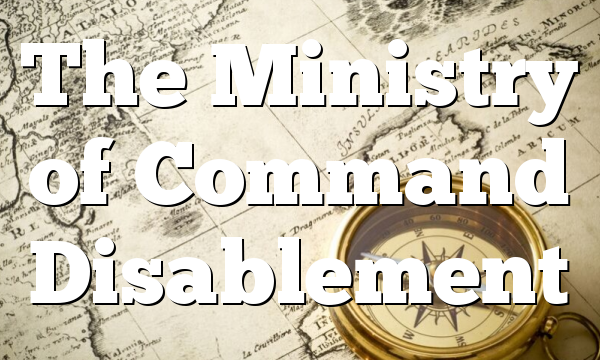Click to join the conversation with over 500,000 Pentecostal believers and scholars
Click to get our FREE MOBILE APP and stay connected
| PentecostalTheology.com



280
Book Reviews
Denise A. Austin, Jacqueline Grey, and Paul W. Lewis (eds.), Asia Pacific Pen-
tecostalism. Vol. 31 Global Pentecostal and Charismatic Studies (Leiden,NL: Brill,
2019). 423 pp. $75.00 paperback.
Asia Pacific Pentecostalismis a collection of essays on Pentecostalism across the Asia Pacific region. Authors include scholars, emerging academics, and grass- roots practitioners. Similar endeavors have been carried out in recent years, more notably Allan Anderson and Edmond Tang’s edited volume, Asian and Pentecostal: The Charismatic Face of Christianity in Asia (Regnum, 2011), and Vinson Synan and Amos Yong’s edited volume, Global Renewal Christianity: Spirit Empowered Movements. Volume One, Asia and Oceania(Charisma House, 2016). In contrast to these two volumes where initial efforts came from the West, the idea for the current volume originated out of conversations at the Asia Pacific Theological Association (5).
Due perhaps to the unique advantage of Asia PacificTheological Association (APTA) connections, the spread of countries represented in Asia Pacific Pen- tecostalism received equal attention when disparity was observed previously. Unique to this volume is also the inclusion of chapters on Cambodia, Laos, the South Pacific Islands, and Papua New Guinea. The intentional efforts of the editors and contributors to include underrepresented voices ensures that the diverse expressions of Asian/Oceanic Pentecostalism are reflected more com- prehensively.
Since Pentecostalism has been explored more extensively in some countries than others, the foci of each chapter differ. Therefore, while some chapters build on previous research and engage in further dialogue (e.g., Korea), oth- ers provide a more foundational overview of the history of Pentecostalism in contexts where little information is available to date (e.g., Cambodia and Laos). Despite the different methodologies adopted, common themes are observed.
Among several reoccurring themes, the four areas that will be highlighted are contributions of indigenous leadership, the influence of charismatic renewal, cooperative efforts among churches or the lack thereof, and the role that Pentecostal churches play in the society. These are also the topics that deserve ongoing research.
While in the past, church histories of the majority world were primarily discussed through the lens of missionaries, the current volume continues the modified methodology with an added focus on the contributions of local lead- ers and ways in which effective indigenous leadership furthers the growth of local Pentecostal churches (e.g., Hong Kong, 85–104; Thailand, 160–161; Malaysia, 196–202; the Philippines, 219–226; the South Pacific Islands, 302–309; Australia, 381–382). Indigenous leadership is also observed in China (68–80),
Pneuma
© koninklijke brill nv, leiden, 2020 | doi:10.1163/15700747-04202009
1
Book Reviews
281
although readers are reminded that the term Pentecostal/ism carries with it a typological and theological imposition for churches in China, which is not always welcome (64).
Charismatic renewal that made inroads into historic churches in the West in the 1960s also had palpable impact on Asia Pacific countries through transna- tional connections, including, for instance, Japan (27–28), the Philippines (236–238), Indonesia (252–254), Singapore (274), Papua New Guinea (331), New Zealand (357–359), and Australia (384–385). In particular, the charismatic teaching has been so prominent in Malaysia that the subsequent development has “blurred the initial distinctive of Pentecostal and charismatic identity to a hybrid Pentecostal/charismatic one” (202). The emerging of a new Pentecostal identity—shaped by distinctive local context—can be expected to have also taken place in other countries in this region where Christianity is a minority religion.
In some countries, Pentecostal enterprises have engaged in cooperative efforts with other denominations (Taiwan, 120; Cambodia, 137). In other corners, however, competition instead of cooperation among Pentecostal churches is reported (Papua New Guinea, 342). Since Pentecostals and Evangel- icals share a number of conservative doctrinal views, close association between the two ecclesial families are repeatedly observed in this volume.
The social impact of Pentecostal churches is yet another theme that sev- eral authors explore, although with varying emphasis. The work that Pente- costal churches engage in range from social welfare projects in Korea (40–41), community development programs in Cambodia (142–144) and Vietnam (168), to social services in Singapore (284–286). Although Pentecostal churches in Myanmar are devoted to social ministries today (182–190), the Assemblies of God of Myanmar missions have traditionally upheld a pre-millennial eschatol- ogy, and thus were not involved in social ministry in earlier days (174–175). In contrast, there is a lack of Pentecostal presentation in social engagement in Indonesia to this day (265).
Churches in a number of Asia Pacific countries are under the watchful eye of government authorities, including Pentecostal churches in Singapore that have had to “accommodate restrictions implemented by the state” (284). In a reverse direction, however, Pentecostal churches in New Zealand have sought political impact by engaging in various political strategies (359–361). Neverthe- less, Pentecostals in New Zealand seem to have limited involvement in issues of social concern beyond the traditional issues of personal morality (361–362). Their overlooking the bicultural structures of the New Zealand political ethos (363) is one example. How Pentecostalism has interfaced with modern culture while retaining its identity will continue to occupy future research.
Pneuma 42 (2020) 263–323
2
282
Book Reviews
Since one of the main objectives of this volume is to provide a more founda- tional overview of the history of Pentecostalism in certain locations to correct the absence of critical historical reflection (5), it is understandable why some discussion remains more descriptive than analytical. To push future research further, scholars are encouraged to interact with sources at hand even more critically.
In cases where sources are meager, as are often the case in Pentecostal stud- ies in little-studied regions, it behooves scholars to engage in continued hard work to uncover and compile sources, written and oral. The significance of oral sources cannot be overemphasized when written sources are scanty and not readily identifiable.
Lastly, future research may consider incorporating quantitative research as exemplified by the chapter on Indonesia (255–261). As the Pentecostal- Charismatic Movement takes pride in their growth, quantitative methods of research can help explain the growth pattern in a more nuanced manner. It will also offer scholars additional resources while engaging in ecumenical or inter- faith dialogue in this multi-religious, multi-ethnic, and multi-cultural region.
Through close studies of archival materials, the incorporation of oral sources, and careful observation of the growth of Pentecostalism against the sociopolitical backdrop of the region, this volume presents distinctive colors of Pentecostalism in Asia Pacific and complicates the global Pentecostal story. Anyone interested in the subject matter will benefit from the account, analysis, and insights in this work.
Judith C.P. Lin
Independent Scholar, Montrose, California,USA judithlin@fuller.edu
Pneuma 42 (2020) 263–323
3


